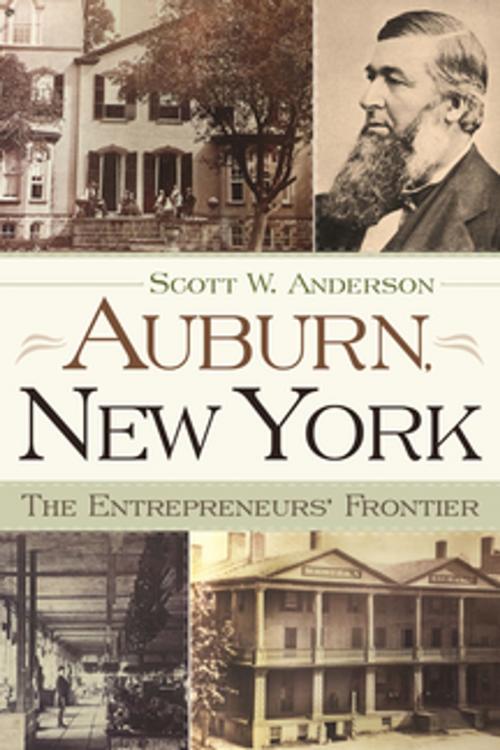Auburn, New York
The Entrepreneurs’ Frontier
Business & Finance, Entrepreneurship & Small Business, Entrepreneurship, Nonfiction, History, Americas, United States| Author: | Scott W. Anderson | ISBN: | 9780815653301 |
| Publisher: | Syracuse University Press | Publication: | October 13, 2015 |
| Imprint: | Syracuse University Press | Language: | English |
| Author: | Scott W. Anderson |
| ISBN: | 9780815653301 |
| Publisher: | Syracuse University Press |
| Publication: | October 13, 2015 |
| Imprint: | Syracuse University Press |
| Language: | English |
Nestled in the heart of the Finger Lakes region, Auburn, New York, is home to
some of the key figures in our nation’s history. Both William Seward and Harriet
Tubman lived in Auburn, as did Martha Coffin Wright, a pioneering figure
in the struggle for women’s suffrage. Auburn’s significance to American life,
however, goes beyond its role in political and social movements. The seeds of
American development were sown and bore fruit in small urban centers like
Auburn. The town’s early and rapid success secured its place as a cornerstone
of the North American industrial core.
Anderson chronicles the story of Auburn and its inhabitants, individuals with
the skills and ingenuity to nurture and sustain an economy of unprecedented
growth. He describes the early settlers who capitalized on the rich geographic
advantages of the area: abundant water power and access to transportation
routes. The entrepreneurs and capital that Auburn attracted built it into a thriving
community, one that became a center of invention, manufacturing, and
finance in the mid-nineteenth century. Just as the high profits and rapid accumulation
of wealth allowed the community to prosper and grow, these factors
also initiated its decline. Anderson traces Auburn’s momentous rise and gradual
decline, illustrating American capitalism in its rawest form as it played out in
small towns across the nation.
Nestled in the heart of the Finger Lakes region, Auburn, New York, is home to
some of the key figures in our nation’s history. Both William Seward and Harriet
Tubman lived in Auburn, as did Martha Coffin Wright, a pioneering figure
in the struggle for women’s suffrage. Auburn’s significance to American life,
however, goes beyond its role in political and social movements. The seeds of
American development were sown and bore fruit in small urban centers like
Auburn. The town’s early and rapid success secured its place as a cornerstone
of the North American industrial core.
Anderson chronicles the story of Auburn and its inhabitants, individuals with
the skills and ingenuity to nurture and sustain an economy of unprecedented
growth. He describes the early settlers who capitalized on the rich geographic
advantages of the area: abundant water power and access to transportation
routes. The entrepreneurs and capital that Auburn attracted built it into a thriving
community, one that became a center of invention, manufacturing, and
finance in the mid-nineteenth century. Just as the high profits and rapid accumulation
of wealth allowed the community to prosper and grow, these factors
also initiated its decline. Anderson traces Auburn’s momentous rise and gradual
decline, illustrating American capitalism in its rawest form as it played out in
small towns across the nation.















